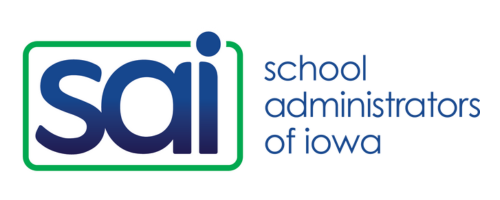Effective Superintendent-Board Collaboration
Working effectively with the board amid such political polarization can be challenging. In a recent research brief, Hanover Research recommends resources and practices for superintendents to foster a constructive work environment with school board members.
The following summary includes the main details from the research; however, you are encouraged to access the full brief for additional details and examples—it's a quick read.
Recommendations :
- Develop a district code of civility in collaboration with the school board.
- Adopt a "policy governance" mindset. Clarifying responsibilities, communication channels, meeting standards, and the district vision will encourage board-superintendent efficiency and limit role confusion.
- Find common ground through values-based dialogue and consensus-building. Outline the decision-making process and articulate a common goal.
Best Practices:
Research supports clear role recognition, open communication, and positive relationships as the key to effective board-superintendent teams who positively impact student learning.
- Establish Clear Roles & Responsibilities: “the most effective school boards spend most of their time creating policies to improve student achievement within a shared district vision, leaving the policy implementation and day-to-day operations to the superintendent and their professional staff... Districts should consider establishing a policy that carefully outlines specific guidelines and responsibilities the superintendent and school board each share.”
- Sustain Communication Channels: Consider the following guidelines and strategies for a communications plan.
1. Determine the desired frequency of communication.
2. Develop standards for communication (e.g., when, how — see the full brief for a Channels for Communication chart).
3. Allow the board president and superintendent to build meeting agendas together.
4. Provide board members with regularly scheduled updates, in accordance with the open records law requirements.
5. Allow regular opportunities for principals to report directly to the board during board meetings.
6. Determine the process for governing board member communications about building-level or staff issues and clarify the superintendent's role.
- Build Strong Relationships: Positive superintendent and board relations are characterized by confidence, support, respect, and open communication. Best practices for building relationships include connecting early and building rapport with new board members, ensuring equal treatment of all board members, listening to each board member to understand their perspectives, seeking advice from board members when appropriate, engaging in professional learning together as a way of building trust, and recognizing and celebrating each other’s successes.
- Implement a Governance Mindset: the board identifies the outcomes or the “ends” and the superintendent and staff manage the “means” — the way toward the outcomes. These four approaches can help.
1. Systems Thinking—understanding that one decision has implications for the entire district.
2. Strategic Focus – “Effective governance follows a strategic progression through the steps of defining and reaching agreement on the moral imperative, creating a unity of purpose, and adopting strategic goals. The operational focuses of the board and superintendent must be on achievement of the moral imperative of raising the bar and closing the gap for all students in the district.”
3. Deep Learning – to be effective decision-makers, the board needs to be well informed about the workings of the district; the superintendent needs to be purposeful and intentional about what information they provide to the board.
4. Public Manner – both board members and the superintendent model the civilized behavior they expect from the students in the district.
Strategies for Collaboration & Consensus Building
These tools and strategies can help manage contentious issues and debates.
- Consider adopting a code of civility. (Sharone Bar David’s book Trust Your Canary is a great resource—read a two-page summary ). Common elements of a civility policy include the following
- Define civility
- Discuss why civility matters
- Note that civility represents a realistic, attainable goal (e.g., stakeholders can acknowledge differences respectfully, disagree courteously, solve problems constructively)
- Specify acceptable and unacceptable forms of language and behavior
- Set expectations (in general and for different stakeholder groups)
- Outline process for reporting violations
- Indicate how the district will respond to confirmed violations
- Resolve conflict through Value Based Dialogue. Harvard Law provides four strategies for de-escalation:
- Consider interests separate from values and engage in issues individually.
- Establish rapport and common cause – e.g., in service of our students.
- Appeal to shared values.
- Confront values differences directly and seek opportunities for values creation.
Additionally, superintendents can facilitate difficult conversations by helping participants clarify the conflict, avoiding taking sides, affirming the validity of all viewpoints, framing the conflict as a problem to be solved, inviting the group to proceed in the areas where they agree, and taking a break until a future meeting.
- Consider a consensus-building process like the following from Iambrown (Excerpted from brief):

Shared language and shared vision anchor the work.
Again, the full brief includes additional details and examples.
